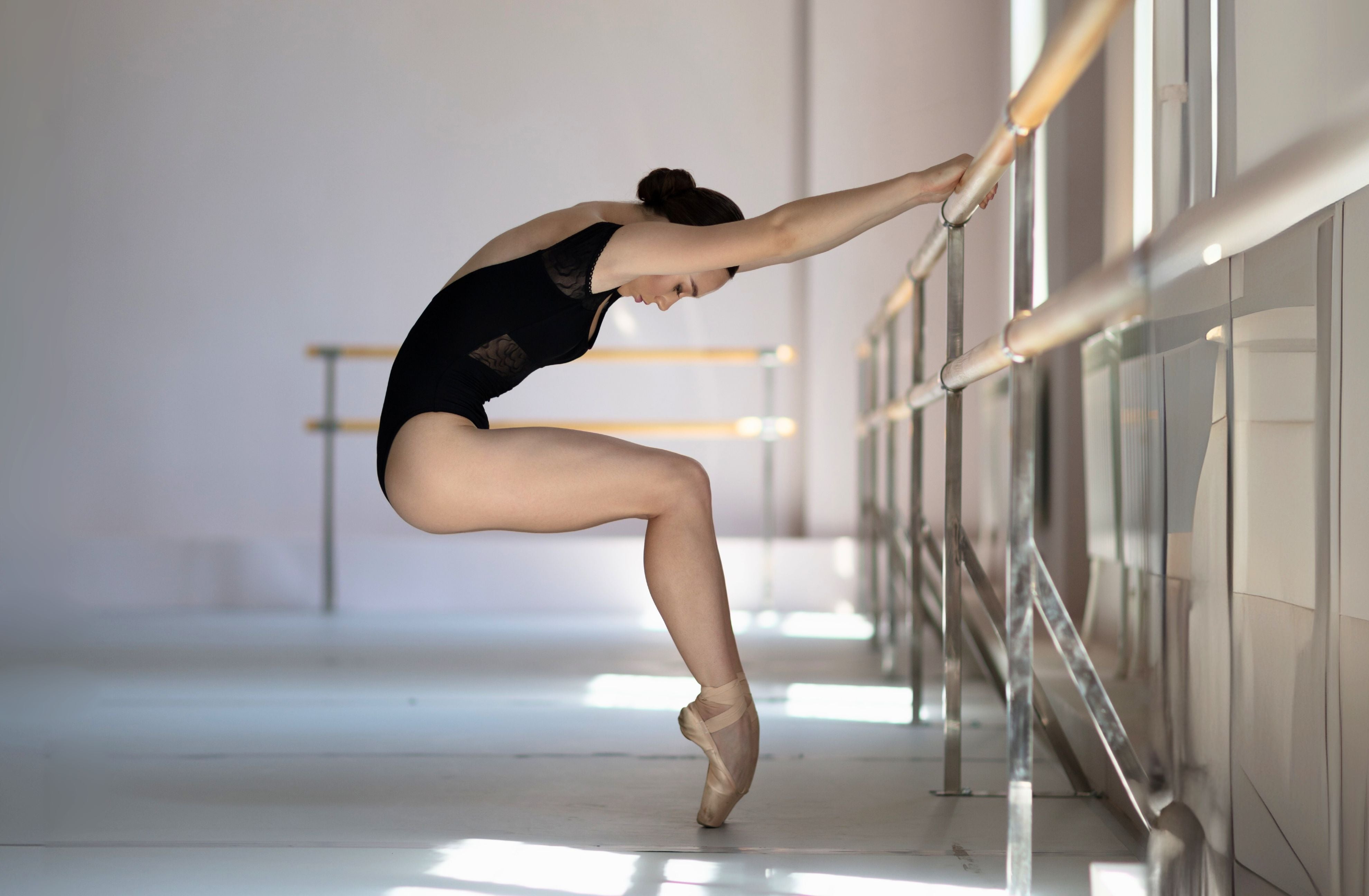
WHAT DANCERS ENDURE TO EXCEL PART 1: THE PHYSICAL COST OF ARTISTRY
Behind every graceful jump and seemingly effortless extension lies a body under immense strain. For many elite dancers, pain becomes part of the routine, and injury an unwelcome companion. In our first article of this dance series, DANCE AND LONGEVITY: HOW MOVEMENT TRANSFORMS YOUR BRAIN, BODY, AND DNA, we explored how dance supports long-term health, protecting against chronic disease, sharpening cognitive performance, and strengthening the mind-body connection.
But there’s another side to this story.
In this second part, we look at what dancers endure to perform at their peak. From micro-tears to major surgeries, even the most careful training can’t always prevent damage. The demands are immense, and the consequences can be lasting.

KEY TOPICS WE WILL EXPLORE, PLUS A SPECIAL FEATURE
We explore what extreme mobility means for the body, from the most common injuries dancers face to the path of recovery after surgery. To do so, we draw on the experience of our Flexi-Ambassador, Laetitia Bouffard-Roupé—an international ballerina, aerialist and art model—who recently underwent a full hip replacement after years of intense physical performance.
The next and final article in this series will focus on the psychological challenges dancers face, including career transitions, identity shifts, and mental health struggles, guided by both the literature and Laetitia’s story told through a different lens.
But first, let’s dive into the real, raw, and revealing side of what it takes to stay at the top, physically.
EXTREME FLEXIBILITY: ADVANTAGES AND DRAWBACKS
Are all dancers capable of extreme flexibility? It may seem so, but while flexibility is common among dancers, not everyone has hypermobility—a condition where joints move beyond their normal limits. Research shows only 20 to 66% meet the criteria.
Some are naturally hypermobile, while others achieve flexibility through dedicated training, stretching and technique, all of which demand countless hours of training and careful attention to their bodies. Still, most dancers rely on a high range of motion to perform powerful movements like jumps, leaps and landings. Although this mobility enhances performance, repeatedly pushing joints to their limits can strain the hip, overload the cartilage and lead to instability [6]. This can result in:
- Partial misalignment, where the hip shifts slightly out of place, also known as femoroacetabular subluxation. This can also happen in other joints like the shoulder.
- Impingement, where bones press on nearby soft tissues, either inside the joint, affecting cartilage, or outside the joint, involving muscles or tendons.
Our Flexi-Ambassador Laetitia shares an important reminder: ‘Don’t make the same mistake I did by ignoring persistent hip pain. As dancers, we often normalise pain and push through it, but if you are resting and still feeling pain, that is a red flag and needs to be checked.’
The reality is that while greater flexibility supports expressive movement, it also increases the risk of injury at the end range of motion. To protect their joints, dancers need proper recovery, good nutrition and specific strength training to support and stabilise the body.
To further understand hypermobility, we suggest reading our article COMMON INJURIES IN HYPERMOBILE BACKS.

TENDINOPATHIES AND MUSCULAR IMBALANCES
Tendinopathy is more than a medical term. It is that persistent ache or sharp pain in a specific tendon that feels like a burning tightness whenever you move. This can happen in any tendon but is most common in the Achilles tendon at the back of your ankle, the hamstrings, the shoulder muscles, and the tendon just below the kneecap, called the patellar tendon. For dancers, whose bodies face intense repetitive strain every day, this kind of pain can become all too familiar. It is not just physical wear but also the frustration of feeling held back by your own body [2,6].
According to research performed on elite dancers, muscular imbalances often add to the challenge. When one muscle group is stronger than its opposite or one leg outperforms the other, it can affect balance, control and technique, increasing the risk of injury.
Because tendinopathies can be complex and persistent, they deserve more than a passing mention. That is why we have explored this issue in depth in our article NOT ANOTHER TENDINOPATHY LET’S PREVENT AND MANAGE SYMPTOMS.
REVISITING THE HIPS: WHEN IT’S TIME FOR SURGERY
Beyond the risk of the hip bone shifting out of place, the incredibly high demands on dancers’ bodies can also lead to actual damage to the cartilage in the hip joint or to conditions where the bones of the hip rub against each other. This causes pain and, in some cases, leads to early hip replacement.
Another common cause of cartilage damage is the prevalence of hip dysplasia in dancers. In this condition, the cup-shaped part of the pelvis, called the socket, does not fully surround the ball-shaped top of the thigh bone. This is mainly related to how the hip joint is shaped, usually from early development, and it has been noted that dancers often do not discover it until symptoms appear. One study found that 89% of ballet dancers show signs of hip dysplasia. This is far higher than in the general population, where mild or undiagnosed forms affect an estimated 2–3%. Because the socket doesn’t fully cover the top of the thigh bone, the joint can become unstable, leading to abnormal movement, cartilage damage, and over time, osteoarthritis [1,6].
Additionally, hip injuries are quite common in dancers, with one review showing that 17.7% of dancers experience hip problems, and most of these are ballet dancers. Another study found that 21.6% of injuries in elite adolescent ballet dancers affected the hip, and the majority were caused by overuse or repetitive strain [4].
THE COMPLEXITY OF FINDING THE RIGHT TREATMENT
When facing an injury or simply trying to access healthcare, a significant challenge has been the lack of preparation and specialisation among medical professionals in adapting to dancers’ specific needs. A study found that 80% of university dancers surveyed felt their healthcare providers did not understand dancers, and 43% reported receiving unhelpful advice [3].
Laetitia supports this by noting, ‘One of the most critical elements in my recovery was finding the right physiotherapist. I changed several times because the first three didn’t understand that I was a professional athlete, not a sedentary 80-year-old. That made all the difference in getting back on track.’

RETURN TO SPORT AFTER HIP SURGERY
Returning to dance after hip surgery can feel like an emotional rollercoaster. It is not just about healing the body but about reclaiming a part of your identity and passion. Studies offer hope, showing that many dancers and athletes can return to their previous levels, but the journey is often marked by adjustments and challenges.
Here is what research has found:
- Among athletes returning to sport after hip impingement surgery, 92% resumed their activities, and 88% reached their pre-surgery performance levels. On average, it took approximately 8 months to return to their previous standard. The sports involved included cycling, swimming, football, aerobics/fitness, running, hockey, volleyball, lacrosse, gymnastics, etc [6].
- In a study involving professional ballet dancers who underwent hip replacement, all participants returned to dance within 3 to 14 months. Most adapted their routines to avoid high-impact movements such as jumps in order to protect their hips [5].
WHAT ABOUT LAETITIA’S TIMELINE FOR RECOVERY?
Laetitia shared that her recovery took longer than she expected: ‘My surgeon said I’d be fully healed and pain-free in 6 months, which gave me unrealistic expectations. In reality, it took over a year before I truly felt like myself again. Accepting the unpredictability of recovery was just as important as the physical healing.’
She also describes how she carefully adapted her training: ‘For the first 12 weeks, following my physio’s advice, I just walked daily with crutches. I started physio afterwards, but from day three after surgery, I was already doing gentle conditioning for abs and glutes, plus floor stretches. It felt strange, I didn’t know how far I could push without risking dislocation. That fear stayed with me at first. So, I had to be extremely in tune with my body and prioritise gentleness over intensity.’
BOTTOM LINE: WALKING THE LINE BETWEEN ARTISTRY AND INJURY
Elite dancers walk a fine line between pushing their flexibility to the extreme and protecting themselves from injury. The intense range of motion required for jumps, splits, oversplits, and other demanding movements places significant strain on the joints, often leading to cartilage overload and hip injuries, sometimes severe enough to require surgery. Recovery is possible but can take months, often requiring adjustments such as limiting high-impact movements. We’re grateful to international ballerina, aerialist and art model, Laetitia Bouffard-Roupé for sharing her story of undergoing a full hip replacement. Her openness offers reassurance and perspective to others navigating similar challenges.
At LEMAlab®, where elite performance is the goal, we focus on evidence-based solutions. With the right combination of strength training, nutrition, tissue recovery and injury prevention, dancers and other physical artists can sustain peak performance and extend their careers beyond previous limits. While the risks cannot be fully eliminated, this approach shifts the odds towards longevity, resilience and control.
Check the final chapter of this series to explore the psychological side of elite performance.














Leave a comment
This site is protected by hCaptcha and the hCaptcha Privacy Policy and Terms of Service apply.